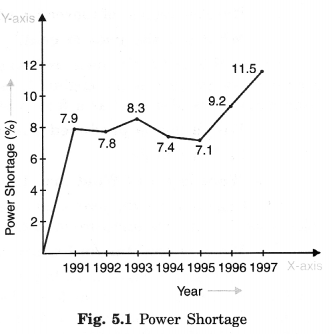NCERT Solutions for Class 8 Science Chapter 5 Coal and Petroleum are part of NCERT Solutions for Class 8 Science. Here we have given NCERT Solutions for Class 8 Science Chapter 5 Coal and Petroleum.
| Board | CBSE |
| Textbook | NCERT |
| Class | Class 8 |
| Subject | Science |
| Chapter | Chapter 5 |
| Chapter Name | Coal and Petroleum |
| Number of Questions Solved | 9 |
| Category | NCERT Solutions |
NCERT Solutions for Class 8 Science Chapter 5 Coal and Petroleum
NCERT TEXTBOOK EXERCISES
Question 1.
What are the advantages of using CNG and LPG as fuels?
Answer.
The advantages of using CNG and LPG as fuels are as follows:
- These are clean fuels.
- These are low-cost fuels.
- These are available easily.
- These can be used directly for burning in homes and factories where it can be supplied through pipes.
Question 2.
Name the petroleum product used for surfacing roads.
Answer.
A petroleum product ‘Bitumen’ is used for surfacing of roads.
Question 3.
Describe how coal is formed from dead vegetation. What is this process called?
Answer.
About 300 million years ago, the earth was having dense forests in low-lying wetland areas. Due to earthquakes and volcanic eruptions, these forests got buried under the soil. As more soil deposited over them, they were compressed.
The temperature also raised as they sank deeper and deeper. Due to high temperature and lack of oxygen, dead plants inside the earth got slowly converted to coal. As coal contains mainly carbon, the slow process of conversion of dead vegetation into coal is called carbonization.
Question 4.
Fill in the blanks:
(a) Fossil fuels are.…….,…………. and………..
(b) Process of separation of different constituents from petroleum is called………………
(c) Least polluting fuel for a vehicle is……………
Answer.
(a) coal, petroleum, natural gas
(b) refining
(c) CNG.
Question 5.
Tick True/False against the following statements:
(a) Fossil fuels can be made in the laboratory. (T/F)
(b) CNG is more polluting fuel than petrol. (T/F)
(c) Coke is almost pure form of carbon. (T/F)
(d) Coal tar is a mixture of various substances. (T/F)
(e) Kerosene is not a fossil fuel. (T/F)
Answer.
(a) False
(b) False
(c) True
(d) True
(e) False.
Question 6.
Explain why fossil fuels are exhaustible natural resources.
Answer.
Fossil fuels are present in nature in limited quantity and are being exhausted abundantly by us. That is why fossil fuels are called exhaustible natural resources.
Question 7.
Describe characteristics and uses of coke.
Answer.
Coke is a tough, porous, and black substance. It is an almost a pure form of carbon. “Coke is obtained by heating soft coal in the absence or little supply of air”.
It is used in the manufacture of steel and in the extraction of many metals.
Question 8.
Explain the process of the formation of petroleum.
Answer.
Petroleum is formed from organisms living in the sea. When these organisms died, their bodies settled at the bottom of the sea and got covered with layers of sand and clay. Over millions of years, they were transformed into petroleum and natural gas under the absence of air and the presence of high temperature and pressure.
Question 9.
The following table shows the total power shortage in India from 1991-1997.
Show the data in the form of a graph. Plot shortage percentage for the years on the Y-axis and the year on the X-axis.
Answer.
| S. No. | Year | Shortage (%) |
| 1 | 1991 | 7.9 |
| 2 | 1992 | 7.8 |
| 3 | 1993 | 8.3 |
| 4 | 1994 | 7.4 |
| 5 | 1995 |
7.1 |
| 6 | 1996 | 9.2 |
| 7 | 1997 | 11.5 |

We hope the NCERT Solutions for Class 8 Science Chapter 5 Coal and Petroleum help you. If you have any query regarding NCERT Solutions for Class 8 Science Chapter 5 Coal and Petroleum, drop a comment below and we will get back to you at the earliest